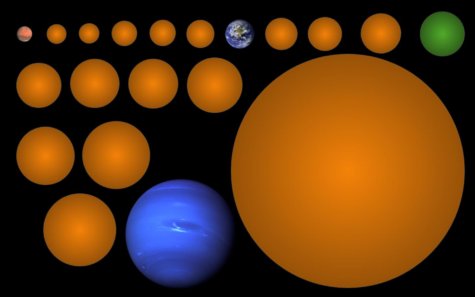VANCOUVER, British Columbia — Talk about one person making a big impact. University of British Columbia astronomy student Michelle Kunimoto has discovered 17 new planets. As if that wasn’t enough, one of these new worlds appears to be Earth-sized and potentially habitable.
Ms. Kunimoto made these incredible discoveries by sifting through data originally collected by NASA’s Kepler mission. Over the span of four years, the Kepler satellite searched for new planets, especially within the “Habitable Zones” of nearby stars where the possibility of liquid water is much greater.

The newly discovered Earth-sized planet will probably need a better name soon, but for now it’s being called KIC-7340288 b. This world is one and a half times the size of Earth, but still small enough to be considered “rocky” instead of “gaseous,” and resides with the Habitable Zone of its star.
“This planet is about a thousand light years away, so we’re not getting there anytime soon!” says Kunimoto, a PhD candidate in the department of physics and astronomy, in a release. “But this is a really exciting find, since there have only been 15 small, confirmed planets in the Habitable Zone found in Kepler data so far.”
A year on this new planet is only 142 ½ days long, as it orbits its star at only 0.444 Astronomical Units (1 AU is the distance between the Earth and our sun). That makes its orbit only slightly larger than Mercury’s, and it gets roughly a third of the light that we all take for granted here on Earth.
Among the 16 other new planets, the smallest is two-thirds the size of Earth. The rest range in size, with some being eight times as large as Earth.
Unbelievably, this actually isn’t the first set of planets that Ms. Kunimoto has discovered; she found four others while attaining her undergraduate degree at UBC. This time around, she used what is called the “transit method” to search for new planets among the estimated 200,000 stars recorded during the Kepler mission.
“Every time a planet passes in front of a star, it blocks a portion of that star’s light and causes a temporary decrease in the star’s brightness,” she says. “By finding these dips, known as transits, you can start to piece together information about the planet, such as its size and how long it takes to orbit.”
Ms. Kunimoto also got some assistance from UBC alumnus Henry Ngo, who helped her gain access to super clear follow-up images of the planets’ nearby stars using the Gemini North 8-metre Telescope in Hawaii.
“I took images of the stars as if from space, using adaptive optics,” she adds. “I was able to tell if there was a star nearby that could have affected Kepler’s measurements, such as being the cause of the dip itself.”
On top of discovering the planets, Ms. Kunimoto was also able to observe thousands of already-discovered Kepler planets, and is planning on refining the initiative’s entire exoplanet census.
“We’ll be estimating how many planets are expected for stars with different temperatures,” comments Kunimoto’s PhD supervisor and UBC professor Jaymie Matthews. “A particularly important result will be finding a terrestrial Habitable Zone planet occurrence rate. How many Earth-like planets are there? Stay tuned.”
The study is published in The Astronomical Journal.
